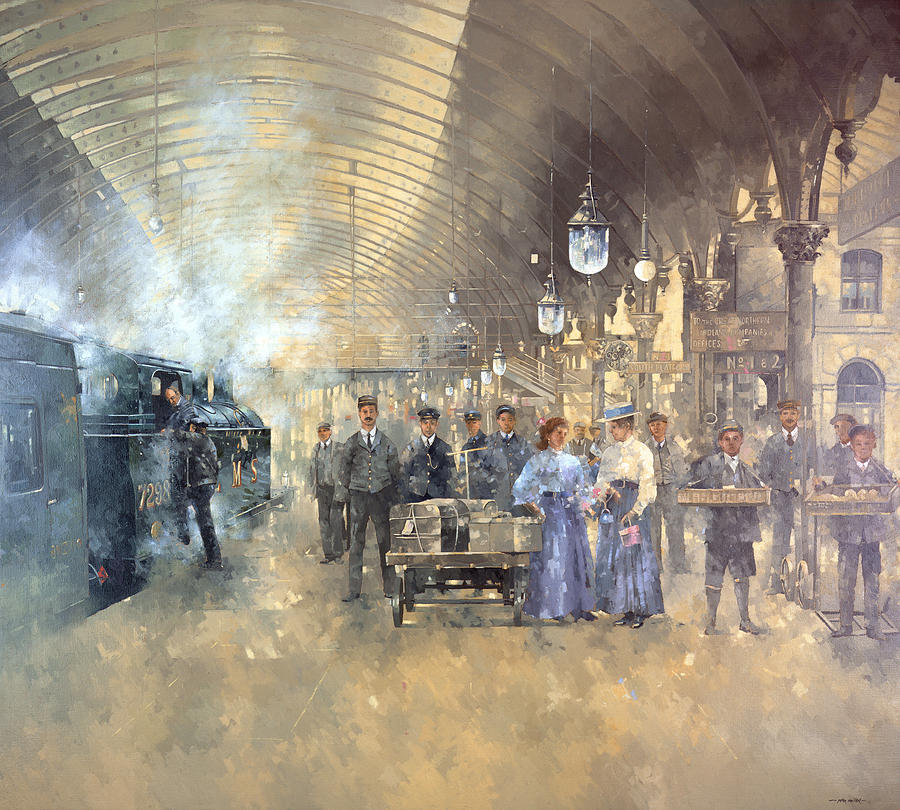
The “great hall of glass looks like a miniature version of London Airport� On its expanse of floor and against its walls passengers lie and await trains, which they are not allowed to enter. Betjeman was scathing about the current Euston Station, opened by the Queen in 1968: Hardwick was a friend and defender of J M W Turner (1775-1851) and one of his executors. He was - with Charles Barry and Robert Smirke, one of the principal establishment architects of his era. In 1854 he received the Royal Gold Medal for architecture. He was also a member of the Institution of Civil Engineers. Hardwick was - a founder member of the Institute of British Architects, which became the Royal Institute of British Architects in 1837. He also designed Birmingham Curzon Street Station (1838). After his return Hardwick was appointed Surveyor to St Bartholemew’s Hospital in succession to his father.

He began a four year architectural grand tour of Italy and France when he was twenty-three. At the age of sixteen he started attending the Royal Academy Schools. Philip Hardwick, the architect of Euston, was articled to his father, Thomas Hardwick (1752-1829). The wrought iron gates to old Euston have been preserved and are to be found in the National Railway Museum at York.īesides the noble arch there was a magnificent neo-classical departure hall - detailed with impeccable scholarship and believed by many to have been one of the finest public spaces in London. Although the battle was lost conservation was to become an increasing part of architectural debate. London County Council in which the Royal Fine Art Commission also joined in. The episode aroused violent controversy, and protests were led by John Betjeman. Sir John Betjeman by Martin Jennings in St. It was destroyed, in act of philistinism, or wilful vandalism, by British Railways in 1962.

Its stern Greek Doric columns were almost 13 metres tall. Departing passengers would pass through the grand Propylaeum, the entry to a temple complex - the affectionately remembered Euston Arch. Passengers arriving at Euston could step out from trains straight into carriages waiting immediately outside the train sheds. Fox went on to have a distinguished career as a civil and mechanical engineer. They were designed by Robert Stephenson, the son of George Stephenson, and the Chief Engineer of the railway, and Charles Fox, the son of a prominent sugeon. The train sheds, however, were modest, economical, structures. Such a transformation in society was celebrated with a new kind of architecture. The railway reduced the arduous twelve hour coach journey from London to Birmingham to less than half - the current journey time is an hour and thirty minutes. The London & Birmingham Railway started services between the two cities in 1837. With it began the era of competitive station building in capital cities. Philip Hardwick (1792-1870), architect and Robert Stephenson (1803-59), and Charles Fox (1810-74) engineersĮuston was the first of the great stations. But here we must agree with those who were the butts of Flaubert’s humour.

The dictionary is an assemblage of popular opinions - cited as examples of bourgeois crassness. “Railway Stations: Go into ecstasies over them, and cite them as architectural wonders.” (“Gares de chemin de fer: S'extasier devant elles et les donner comme mod�les d'architecture.”) - Flaubert, Le dictionnaire des idées reçues - never completed and invariably published with Bouvard and Pécuchet, which was also unfinished.


 0 kommentar(er)
0 kommentar(er)
